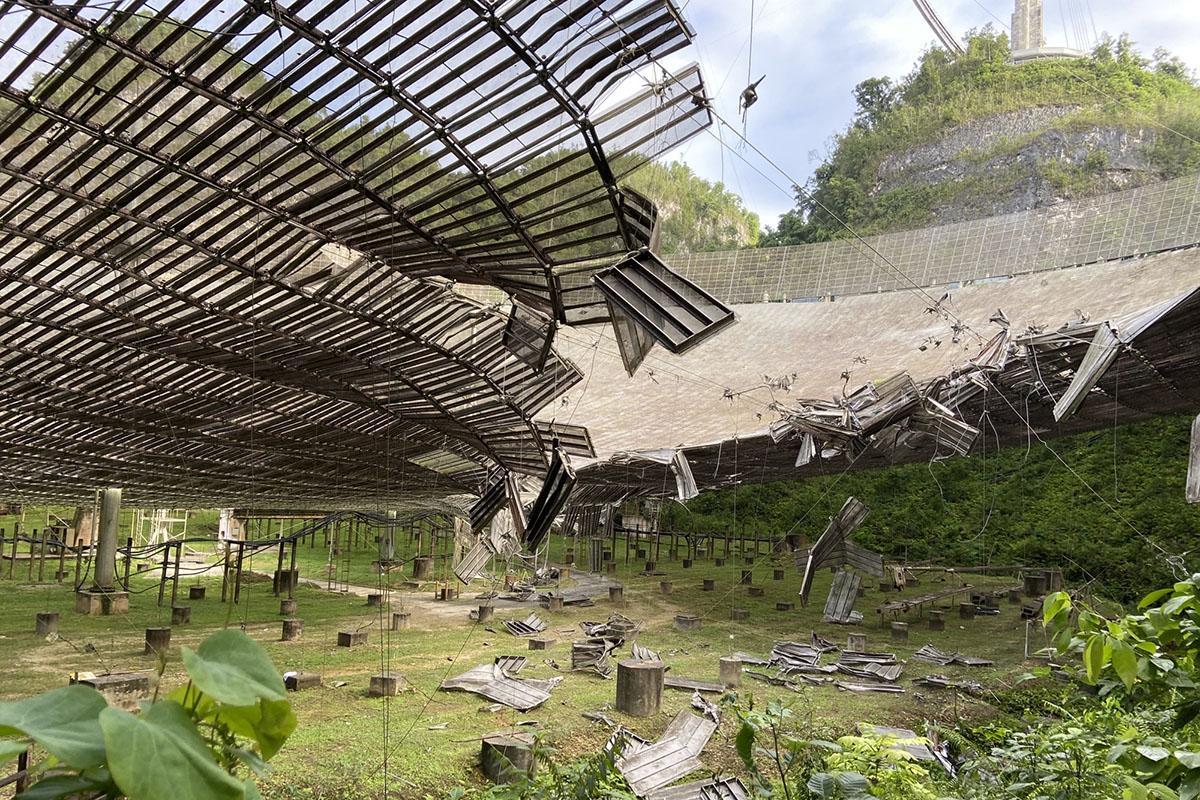Arecibo Observatory: One of the world's biggest telescopes suffers major damage in freak incident
Facility was already recovering from devestation of Hurricane Maria

Your support helps us to tell the story
From reproductive rights to climate change to Big Tech, The Independent is on the ground when the story is developing. Whether it's investigating the financials of Elon Musk's pro-Trump PAC or producing our latest documentary, 'The A Word', which shines a light on the American women fighting for reproductive rights, we know how important it is to parse out the facts from the messaging.
At such a critical moment in US history, we need reporters on the ground. Your donation allows us to keep sending journalists to speak to both sides of the story.
The Independent is trusted by Americans across the entire political spectrum. And unlike many other quality news outlets, we choose not to lock Americans out of our reporting and analysis with paywalls. We believe quality journalism should be available to everyone, paid for by those who can afford it.
Your support makes all the difference.The Arecibo Observatory has suffered vast damage, after a cable fell and tore a gap in the dish that powers its telescope.
The incident ripped a 100-foot-gash in the dish as well as causing damage to the "Gregorian Dome" that houses the receiver at the top of the telescope, and the platform that is used to access it.
Operations at the facility in Puerto Rico have now been postponed and the observatory is closed as experts look to understand how the problem could happen and whether it might be possible to fix it.
It is still not clear how the cable broke, according to the University of Central Florida, which manages the National Science Foundation facility.
The observatory was already struggling to fix the damage from Hurricane Maria and the devestation that swept across the whole island. That was just the latest disaster to hit the telescope, which has survived through hurricanes, tropical storms and earthquakes in its 50 years of existence.
The Arecibo Observatory – for years the biggest single-aperture telescope in the world, until China's FAST came online – is used by scientists to conduct a variety of research on planets and other objects elsewhere in the universe. It has been key to the discovery of gravitational waves, asteroids and more.
It has also been seen in a number of fictional works, where it has been portrayed as discovering aliens and being used to endanger humanity. It is famous for its inclusion in one of the pivotal scenes in Goldeneye, for instance.
“We have a team of experts assessing the situation,” says Francisco Cordova, the director of the observatory, in a statement.
“Our focus is assuring the safety of our staff, protecting the facilities and equipment, and restoring the facility to full operations as soon as possible, so it can continue to assist scientists around the world.”
Join our commenting forum
Join thought-provoking conversations, follow other Independent readers and see their replies
Comments